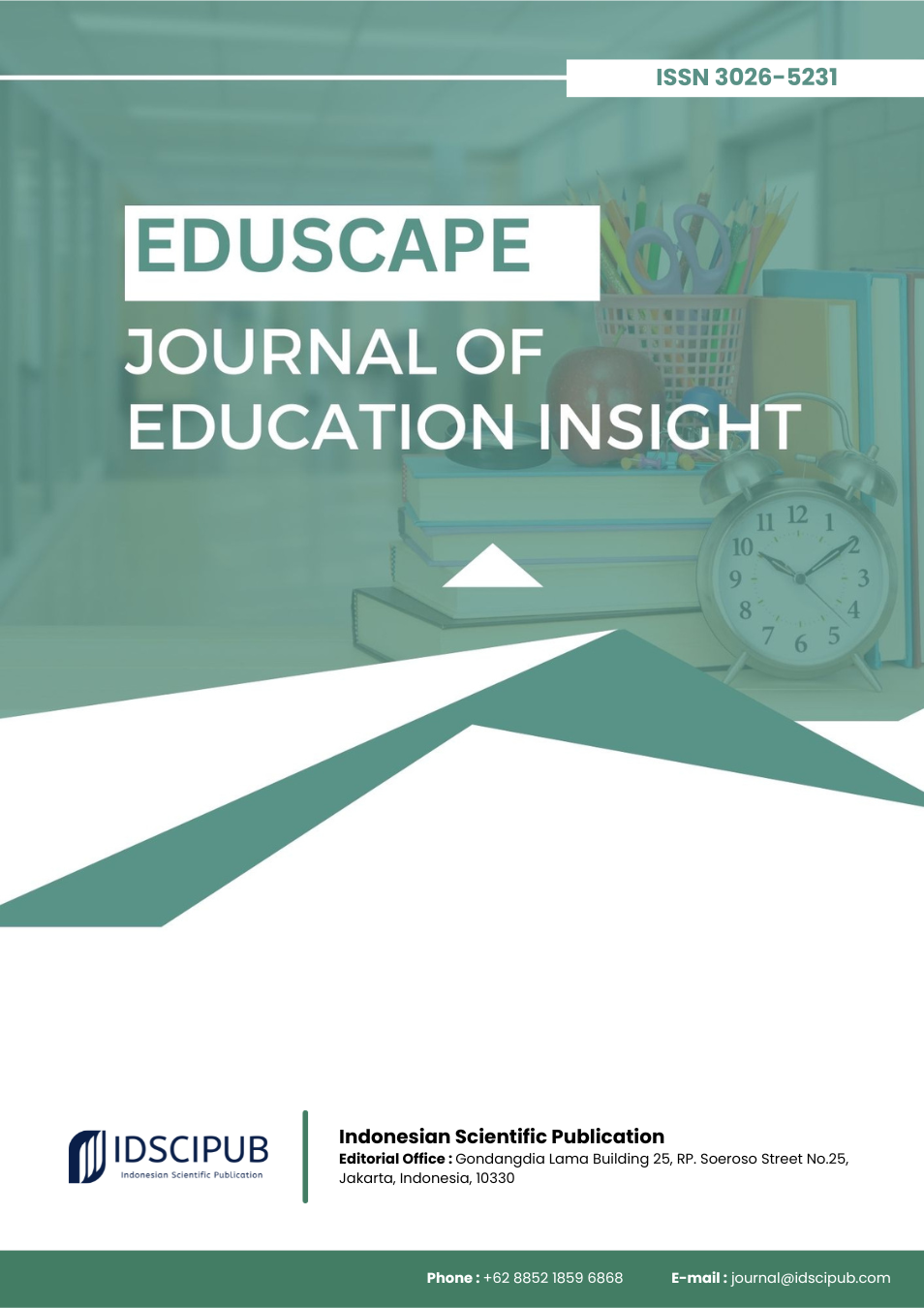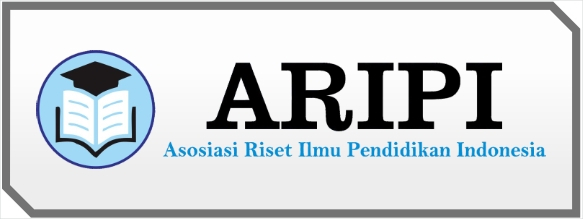Authentic Assessment for Holistic Learning: Evaluating the Implementation of Formative Practices in Indonesian CBE Classrooms
DOI:
https://doi.org/10.61978/eduscape.v3i3.1013Keywords:
Alternative Assessment, Competency Based Education, Formative Assessment, Primary Education, Indonesia, Education Policy, Digital ToolsAbstract
This study examines the implementation of alternative assessment practices in Indonesian primary schools within the Competency Based Education (CBE) framework. Guided by the Merdeka Belajar policy, the research focuses on how portfolios, performance tasks, and student-led reflections are integrated into classroom instruction. A qualitative dominant mixed methods design was employed, involving document analysis, observations, interviews, and rubric based performance scoring in three schools representing urban, rural, and remote (3T) contexts. Findings show that alternative assessments enhance engagement, critical thinking, and communication skills when supported by project-based learning and clear rubrics. Digital tools, especially the Platform Merdeka Mengajar (PMM), enabled real-time feedback and differentiated instruction in digitally equipped schools. However, challenges such as teacher workload, rubric inconsistency, and limited digital infrastructure in rural and 3T areas affected implementation fidelity. Teachers with higher assessment literacy were more consistent in applying formative practices and leveraging assessment data for instructional decisions. The study concludes that sustained implementation of alternative assessments requires systemic support including professional development, collaborative planning structures, and equitable access to digital tools. These practices are essential for realizing the goals of CBE and promoting inclusive, student centered learning environments. The research contributes to policy discourse on assessment reform and offers practical insights for teachers, school leaders, and curriculum designers
References
Amin, M. M., Effendy, E., Camellia, V., Saragih, M., Kamil, A., & Harsono, R. (2023). Validity and Reliability of the Indonesian Version of the Scale for the Assessment of Negative Symptoms. Frontiers in Psychiatry, 13. https://doi.org/10.3389/fpsyt.2022.1045635 DOI: https://doi.org/10.3389/fpsyt.2022.1045635
Arianty, R., Rusilowati, A., & Doyin, M. (2021). The Illustrated Storybooks Advancement as the Literacy Movement for Preparing the Minimum Competency Assessment in Elementary School. JTP - Jurnal Teknologi Pendidikan, 23(3), 184–198. https://doi.org/10.21009/jtp.v23i3.23068 DOI: https://doi.org/10.21009/jtp.v23i3.23068
Ayed, A. E., Hanna, S., & Abdelazeim, F. (2022). Reliability of the TUDS Test for Children With Cerebral Palsy. Bulletin of Faculty of Physical Therapy, 27(1). https://doi.org/10.1186/s43161-022-00104-9 DOI: https://doi.org/10.1186/s43161-022-00104-9
Banawi, A., Latuconsina, A., & Latuconsina, S. (2022). Exploring the Students’ Reading, Writing, and Numeracy Skills in Southeast Maluku Regency Coastal Elementary Schools. Al Ibtida Jurnal Pendidikan Guru Mi, 9(2), 252. https://doi.org/10.24235/al.ibtida.snj.v9i2.10189 DOI: https://doi.org/10.24235/al.ibtida.snj.v9i2.10189
Beshara, P., Davidson, I., Pelletier, M. H., & Walsh, W. R. (2022). The Intra- And Inter-Rater Reliability of a Variety of Testing Methods to Measure Shoulder Range of Motion, Hand-Behind-Back and External Rotation Strength in Healthy Participants. International Journal of Environmental Research and Public Health, 19(21), 14442. https://doi.org/10.3390/ijerph192114442 DOI: https://doi.org/10.3390/ijerph192114442
Bond, E. G., Woolcott, G., & Markopoulos, C. (2020). Why Aren’t Teachers Using Formative Assessment? What Can Be Done About It? Am, 14, 112–136. https://doi.org/10.18296/am.0046 DOI: https://doi.org/10.18296/am.0046
Cahyana, U., Luhukay, J. R., Lestari, I., Irwanto, I., & Suroso, J. S. (2023). Improving Students’ Literacy and Numeracy Using Mobile Game-Based Learning With Augmented Reality in Chemistry and Biology. International Journal of Interactive Mobile Technologies (Ijim), 17(16), 4–15. https://doi.org/10.3991/ijim.v17i16.42377 DOI: https://doi.org/10.3991/ijim.v17i16.42377
Caretta‐Weyer, H., & Gisondi, M. A. (2019). Design Your Clinical Workplace to Facilitate Competency-Based Education. Western Journal of Emergency Medicine, 20(4), 651–653. https://doi.org/10.5811/westjem.2019.4.43216 DOI: https://doi.org/10.5811/westjem.2019.4.43216
Chen, A. M., Armbruster, A. L., Buckley, B., Campbell, J. A., Dang, D. K., Devraj, R., Drame, I., Edwards, A., Haack, S., Ma, Q., Petry, N., Planas, L. G., Sadowski, C. A., Santee, J., Wade, L., & Borja‐Hart, N. (2021). Inclusion of Health Disparities, Cultural Competence, and Health Literacy Content in US and Canadian Pharmacy Curriculums. American Journal of Pharmaceutical Education, 85(1), 8200. https://doi.org/10.5688/ajpe8200 DOI: https://doi.org/10.5688/ajpe8200
Cobb, P., & Jackson, K. (2021). An Empirically Grounded System of Supports for Improving the Quality of Mathematics Teaching on a Large Scale. Implementation and Replication Studies in Mathematics Education, 1(1), 77–110. https://doi.org/10.1163/26670127-01010004 DOI: https://doi.org/10.1163/26670127-01010004
Corresp, V., Ramírez, Ó., Otero, A., Muñoz‐García, D., Uribarri, S., Raya, R., & Costa, V. (2020). Peer Review #1 of “Validity and Reliability of Inertial Sensors for Elbow and Wrist Range of Motion Assessment (v0.1).” https://doi.org/10.7287/peerj.9687v0.1/reviews/1 DOI: https://doi.org/10.7287/peerj.9687v0.1/reviews/1
Džumhur, Ž., Ševa, N., & Rožman, M. (2021). Early Literacy and Numeracy Competencies: Predictors of Mathematics Achievement in the Dinaric Region. 101–122. https://doi.org/10.1007/978-3-030-85802-5_5 DOI: https://doi.org/10.1007/978-3-030-85802-5_5
Earle, S., & Turner, J. (2020). What Has Happened to Teacher Assessment of Science in English Primary Schools? Revisiting Evidence From the Primary Science Quality Mark. Research in Science & Technological Education, 41(1), 22–38. https://doi.org/10.1080/02635143.2020.1834375 DOI: https://doi.org/10.1080/02635143.2020.1834375
Fadiana, M., Nikmah, A., & Hasan, A. H. C. (2023). Self Efficacy of Prospective Mathematics Teacher on Numerical Literacy Based on Lesson Study. Alphamath Journal of Mathematics Education, 9(2), 137. https://doi.org/10.30595/alphamath.v9i2.14362 DOI: https://doi.org/10.30595/alphamath.v9i2.14362
Faqih, M., Adriyani, Z., & Listiyani, L. (2023). Advanced Chatbot Development to Improve Student Literacy and Numeracy Skills. Phenomenon Jurnal Pendidikan Mipa, 12(2), 206–215. https://doi.org/10.21580/phen.2022.12.2.14186 DOI: https://doi.org/10.21580/phen.2022.12.2.14186
Febyola, V., Ananda, R., Feros, A., & Wulandari, C. (2023). Policy Analysis of Principals’ Competency in Primary Schools. Edunesia Jurnal Ilmiah Pendidikan, 4(3), 1109–1121. https://doi.org/10.51276/edu.v4i3.527 DOI: https://doi.org/10.51276/edu.v4i3.527
Ghufron, S. (2023). Development of Electronic Student Worksheets (E-Lkpd) Based on Stad-Type Cooperative Learning on Writing Materials. International Journal of Research and Scientific Innovation, X(V), 128–135. https://doi.org/10.51244/ijrsi.2023.10513 DOI: https://doi.org/10.51244/IJRSI.2023.10513
Gil, J. M. S., & Petry, P. P. (2016). Promoting Digital Competence in Secondary Education: Are Schools There? Insights From a Case Study. Journal of New Approaches in Educational Research, 5(1), 57–63. https://doi.org/10.7821/naer.2016.1.157 DOI: https://doi.org/10.7821/naer.2016.1.157
Goforth, A. N., & Pham, A. V. (2023). Culturally Responsive School-Based Practices. https://doi.org/10.1093/med-psych/9780197516928.001.0001 DOI: https://doi.org/10.1093/med-psych/9780197516928.001.0001
Gunawan, I. M. S., Sopandi, W., Handayani, H., Fatonah, N., Suhendra, I., & Maulana, Y. (2023). Repackaging Character Literacy and Numeracy-Oriented RADEC Learning Model Through Teacher Professional Development Program. Studies in Learning and Teaching, 4(3), 656–665. https://doi.org/10.46627/silet.v4i3.342 DOI: https://doi.org/10.46627/silet.v4i3.342
Gusteti, M. U., Wulandari, S., Rahmalina, W., Putri, M., & Putri, E. K. (2023). Development of Electronic Handouts Using Numerical Literacy-Based Mathemagics Methods for Learning in the Digital Era. Jurnal Eksakta Pendidikan (Jep), 7(1), 115–125. https://doi.org/10.24036/jep/vol7-iss1/709 DOI: https://doi.org/10.24036/jep/vol7-iss1/709
Handayani, N. N. L. (2023). Determination of Realistic Mathematics Education on Problem Solving With Numeracy Literacy Covariables. Jurnal Pendidikan Dan Pengajaran, 56(2), 299–309. https://doi.org/10.23887/jpp.v56i2.63288 DOI: https://doi.org/10.23887/jpp.v56i2.63288
Hasibuan, H. Y., Syarifudin, E., Suherman, S., & Cecep Anwar Hadi Firdos Santosa. (2023). Ethnoscience as the Policy Implementation of Kurikulum Merdeka in Science Learning: A Systematic Literature Review. Jurnal Penelitian Pendidikan Ipa, 9(8), 366–372. https://doi.org/10.29303/jppipa.v9i8.4500 DOI: https://doi.org/10.29303/jppipa.v9i8.4500
Hasson, R. E., Eisman, A. B., Wassmann, A., Beemer, L. R., Templin, T. J., Malinoff, L., Zernicke, R. F., & Rabaut, L. (2023). Aligning Organizational Priorities and System Policies to Support Implementation Scale‐Up of a Tailored Classroom‐Based Physical Activity Intervention in Low‐Resource Schools*. Journal of School Health, 93(6), 464–474. https://doi.org/10.1111/josh.13321 DOI: https://doi.org/10.1111/josh.13321
Hikamudin, E., Riyadi, A. R., Aryanti, Peniasiani, D., Nuryani, P., & Gofur, R. (2023). Improving Elementary School Students’ Understanding of Literacy and Numeracy Through Digital Applications. Mimbar PGSD Undiksha, 11(3), 462–467. https://doi.org/10.23887/jjpgsd.v11i3.64018 DOI: https://doi.org/10.23887/jjpgsd.v11i3.64018
Jahring, & Haidar, I. (2023). Gender Differences Influence Student’s Numeracy Literacy in Secondary Schools in Kolaka Regency, Indonesia. Asian Journal of Education and Social Studies, 41(1), 24–31. https://doi.org/10.9734/ajess/2023/v41i1885 DOI: https://doi.org/10.9734/ajess/2023/v41i1885
Kamal, D. N., & Sumardi, S. (2023). Literacy and Numeracy Skills of Students Sd Negeri Bener Pekalongan Regency Based on Akm in 2021. Journal of Mathematics Education, 8(2), 163–171. https://doi.org/10.31327/jme.v8i2.1973 DOI: https://doi.org/10.31327/jme.v8i2.1973
Kardoyo, K., & Pitaloka, L. K. (2023). Link and Match Education in Indonesia: Implementation of New Policies? Effectiveness of Education Policy Implementation in Indonesia. 562–570. https://doi.org/10.2991/978-2-494069-35-0_69 DOI: https://doi.org/10.2991/978-2-494069-35-0_69
Kocakülah, A. (2022). Development and Use of a Rubric to Assess Undergraduates’ Problem Solutions in Physics. Participatory Educational Research, 9(3), 362–382. https://doi.org/10.17275/per.22.71.9.3 DOI: https://doi.org/10.17275/per.22.71.9.3
Maitland, C., Granich, J., Braham, R., Thornton, A., Teal, R., Stratton, G., & Rosenberg, M. (2018). Measuring the Capacity of Active Video Games for Social Interaction: The Social Interaction Potential Assessment Tool. Computers in Human Behavior, 87, 308–316. https://doi.org/10.1016/j.chb.2018.05.036 DOI: https://doi.org/10.1016/j.chb.2018.05.036
Mellyzar, M., Novita, N., Muliani, M., Marhami, M., & Retnowulan, S. R. (2023). The Literacy and Numeracy Ability Profile Which Are Viewed From Minimum Assessment Components (Akm). Lantanida Journal, 11(2), 168. https://doi.org/10.22373/lj.v11i2.19866 DOI: https://doi.org/10.22373/lj.v11i2.19866
Misbah, Z., Gulikers, J. T. M., Dharma, S., & Mulder, M. (2019). Evaluating Competence-Based Vocational Education in Indonesia. Journal of Vocational Education and Training, 72(4), 488–515. https://doi.org/10.1080/13636820.2019.1635634 DOI: https://doi.org/10.1080/13636820.2019.1635634
Nakkaew, N., & Adunyarittigun, D. (2019). An Initial Development of an Analytic Rubric for Assessing Critical Thinking in English Argumentative Essays of EFL College Students. rEFLections, 26(2), 51–74. https://doi.org/10.61508/refl.v26i2.241755 DOI: https://doi.org/10.61508/refl.v26i2.241755
Palinussa, A. L., Laamena, C. M., & Talib, T. (2023). Implementation of Numeracy Literacy Training for Teachers and Its Achievement in Central Maluku Regency. Pakem Jurnal Pengabdian Kepada Masyarakat, 3(1), 20–26. https://doi.org/10.30598/pakem.3.1.20-26 DOI: https://doi.org/10.30598/pakem.3.1.20-26
Pratt, N. (2016). Neoliberalism and the (Internal) Marketisation of Primary School Assessment in England. British Educational Research Journal, 42(5), 890–905. https://doi.org/10.1002/berj.3233 DOI: https://doi.org/10.1002/berj.3233
Prihandoko, L. A. (2021). The Interplay Between Digital Competencies and Information Literacy in Academic Writing Online Class During COVID-19 Pandemic (PLS-SEM Approach). Eralingua Jurnal Pendidikan Bahasa Asing Dan Sastra, 5(1), 234. https://doi.org/10.26858/eralingua.v5i1.18843 DOI: https://doi.org/10.26858/eralingua.v5i1.18843
Puspitaningtyas, A. W., & Jasmina, T. (2023). The Effect of Teacher Competency on the 2021 Elementary School National Assessment Result. Journal La Sociale, 4(6), 499–513. https://doi.org/10.37899/journal-la-sociale.v4i6.975 DOI: https://doi.org/10.37899/journal-la-sociale.v4i6.975
Ridwan, M., AR, M. M., Budiyono, F., & Sukitman, T. (2023). Improve the Numeracy Skills of Fifth-Grade Students Through Self-Efficacy in Elementary Schools. Jurnal Ilmiah Sekolah Dasar, 7(3), 526–535. https://doi.org/10.23887/jisd.v7i3.58660 DOI: https://doi.org/10.23887/jisd.v7i3.58660
Rini, T. A., Cholifah, P. S., Nuraini, N. L. S., & Margetts, K. (2021). Readiness of Elementary Teachers in Minimum Competency Assessment: Teachers’ Competence in Arranging Literature and Numeration Tests. Profesi Pendidikan Dasar, 8(2), 156–169. https://doi.org/10.23917/ppd.v8i2.16157 DOI: https://doi.org/10.23917/ppd.v8i2.16157
Rohmah, A. N., Sutama, S., Hidayati, Y. M., Fauzıatı, E., & Rahmawati, L. E. (2022). Planning for Cultivation Numerical Literacy in Mathematics Learning for Minimum Competency Assessment (AKM) in Elementary Schools. Mimbar Sekolah Dasar, 9(3), 503–516. https://doi.org/10.53400/mimbar-sd.v9i3.51774 DOI: https://doi.org/10.53400/mimbar-sd.v9i3.51774
Rosnelli, R., & Ristiana, P. A. (2023). Independent Curriculum Learning Management to Improve Students’ Literacy and Numerical Competence in Schools. International Journal of Education in Mathematics Science and Technology, 11(4), 946–963. https://doi.org/10.46328/ijemst.3513 DOI: https://doi.org/10.46328/ijemst.3513
Santia, I., & Handayani, A. D. (2023). Exploring Students’ Numerical Literacy on Statistical Problem-Solving in Indonesia. Qubahan Academic Journal, 3(4), 289–297. https://doi.org/10.58429/qaj.v3n4a181 DOI: https://doi.org/10.58429/qaj.v3n4a181
Suyadi, S., Nuryana, Z., & Sutrisno, S. (2021). The Religion in Higher Education Curriculum Referring to Indonesian Qualification Framework: The Inclusion of Neuroscience and Anti-Corruption Education. International Journal of Education and Learning, 3(1), 38–44. https://doi.org/10.31763/ijele.v3i1.93 DOI: https://doi.org/10.31763/ijele.v3i1.93
Syaifuddin, M. (2022). Minimum Competency Assessment to Measure Mathematical Literacy of Junior High School Students. Journal of Education Research and Evaluation, 6(2), 316–326. https://doi.org/10.23887/jere.v6i2.46263 DOI: https://doi.org/10.23887/jere.v6i2.46263
Thayer, A. J., Cook, C. R., Davis, C., Brown, E. C., Locke, J., Ehrhart, M. G., Aarons, G. A., Picozzi, E., & Lyon, A. R. (2022). Construct Validity of the School-Implementation Climate Scale. Implementation Research and Practice, 3. https://doi.org/10.1177/26334895221116065 DOI: https://doi.org/10.1177/26334895221116065
Thorlacius, L., Garg, A., Riis, P. T., Nielsen, S. M., Bettoli, V., Ingram, J. R., Mármol, V. d., Matusiak, Ł., Pascual, J. C., Revuz, J., Sartorius, K., Tzellos, T., Hessel H. van der Zee, Zouboulis, C. C., Saunte, D. M. L., Gottlieb, A. B., Christensen, R., & Jemec, G. B. E. (2019). Inter‐rater Agreement and Reliability of Outcome Measurement Instruments and Staging Systems Used in Hidradenitis Suppurativa. British Journal of Dermatology, 181(3), 483–491. https://doi.org/10.1111/bjd.17716 DOI: https://doi.org/10.1111/bjd.17716
Utama, F., Zaenuri, Z., & Yuli Kurniawati S Pranoto Kurniawati S Pranoto. (2023). Students Numerical Literacy Ability in Problem Based Learning With Ethnomatematics Nuances. Prima Jurnal Pendidikan Matematika, 7(2), 98. https://doi.org/10.31000/prima.v7i2.8387 DOI: https://doi.org/10.31000/prima.v7i2.8387
Wolf, M. K., & López, A. A. (2022). Developing a Technology-Based Classroom Assessment of Academic Reading Skills for English Language Learners and Teachers: Validity Evidence for Formative Use. Languages, 7(2), 71. https://doi.org/10.3390/languages7020071 DOI: https://doi.org/10.3390/languages7020071
Zulfayani, Z., Ariawan, R., Nufus, H., & Kafrina, K. (2023). Profile of Students’ Numeracy Literacy Ability and Self Efficacy in Mathematics Learning. Mathematics Research and Education Journal, 7(2), 25–35. https://doi.org/10.25299/mrej.2023.vol7(2).14381 DOI: https://doi.org/10.25299/mrej.2023.vol7(2).14381







